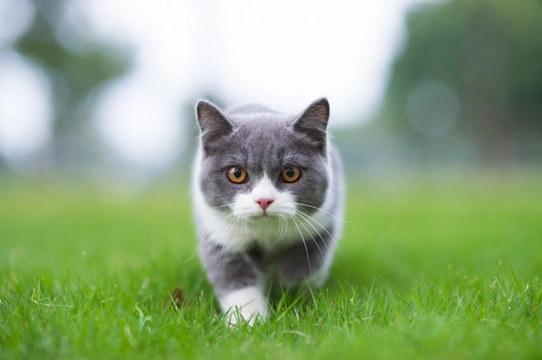
Five things cat owners need to know about cat flu or feline influenza
Anyone who has ever had a bout of the flu will know that it is very different from a bad cold, and whilst having a heavy cold can make you feel quite awful, the flue is far more debilitating and will almost certainly leave you laid up in bed and feeling weak as well as ill.
Cats can catch the flu too, although they don’t get the same strains of flu as we humans do, and people and cats cannot pass the flu on to each other. However, cat flu or feline influenza is highly contagious between cats, and just as can be the case for people, it can be acute and serious in some cats, and even life threatening.
However, many cat owners don’t know very much abut cat flu, how it spreads, how it affects cats, and steps that can be taken to reduce the risk of cat flu; and this is what we will look at within this article. Read on to learn five things that all cat owners need to know about cat flu or feline influenza.
What is cat flu?
Cat flu or feline influenza is much like the flu for people, and just as is the case for people, it can vary in severity form cat to cat.
A cat with cat flu will have a runny nose and watery eyes, and their throat will feel sore and scratchy. They’re also likely to suffer from muscle and joint pain, and may develop a fever.
Cat flu can make your cat’s meow quite hoarse-sounding, and they might also sneeze, dribble, and even develop mouth sores or ulcers. A less common but more serious problem with at flu is ulcers developing on the eyes.
All of this will make your cat feel very sorry for themselves, and they will likely go off their food somewhat, and want to sleep a lot.
How is cat flu spread?
Cat flu is generally caused by a viral infection, and this tends to be one of two specific types of virus. However, there are some bacterial forms of cat flu too.
A cat that is infected with cat flu will spread the condition by means of sneezing and saliva and eye secretions, and a cat does not have to be sick themselves to spread cat flu; some cats will carry the virus and spread it without being ill themselves.
Additionally, the virus can survive in the environment for up to a week, and so can be spread on toys, clothing, food bowls, and by means of other forms of cross contamination.
Can you vaccinate against cat flu?
There is a vaccine available for cat flu, which is effective against the most common form of viral cat flu. This is generally given as standard within the combined cat vaccination protocol. You can also request additional cat flu vaccinations for the bacterial types of cat flu, which you might wish to consider if your cat is at higher risk, such as may be the case for show cats and stud cats.
Vaccinated cats can also be carriers of cat flu without becoming sick themselves.
How serious is cat flu?
Cat flu will make your cat feel very unwell and it is of course very unpleasant, but for most adult cats in good health, they will shake it off and recover. That said, cat flu can be very serious in elderly cats, young kittens, and cats with a compromised immune system.
In some cases of cat flu, eye ulcers may develop and these can cause permanent damage to the eyes, and so if your cat has cat flu and appears to be squinting, suffering from painful eyes, or has visible sores, contact your vet ASAP.
Can cat flu be treated?
Most cats that catch cat flu will shake it off like most people do, but they will need to be kept warm and comfortable and monitored to see how they’re doing in the interim. If you suspect that your cat has cat flu, you should always take them to the vet to get this confirmed and to see what they advise, and to double-check that you are dealing with cat flu and not something else entirely.
If your cat is at higher risk from cat flu, such as if they are a kitten, elderly, not in great health anyway, unvaccinated, or with a compromised immune system, your vet might want to take them in as an inpatient.
This is to monitor them and to provide supportive care to give them the best chance of making a recovery and also, avoiding lasting damage. Such cats may require supplementary feeding, IV fluid therapy and medications of various types to help to reduce fever and any pain, but antivirals and antibiotics are not effective against cat flu, and so there is no “cure” that your vet can administer to speed up recovery.
Even after recovery a cat might carry and pass on the virus to others, which is important to bear in mind if you have other cats too.



